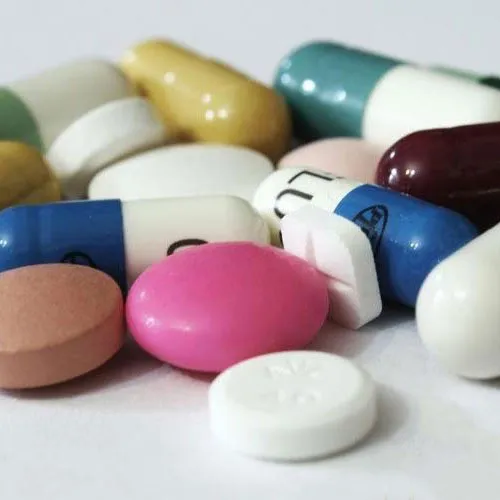
Ethylcellulose Aqueous Dispersion: Barrier & Film Coating
A Practical Insider’s Take on Ethylcellulose Aqueous Dispersion
If you work in coatings or pharma, you already know how stubborn ethylcellulose can be in water. That’s why Ethylcellulose Aqueous Dispersion exists—to deliver waterborne convenience with solvent-like performance. Origin: Room 2308, Dongsheng Plaza 2, No. 508 Zhongshan East Road, Chang’an District, Shijiazhuang, Hebei, China. I’ve seen teams switch to this tech mostly for VOC cuts and more predictable film formation. Honestly, the time savings in scale-up is what wins budgets.

What’s trending (and why it matters)
- Regulatory pressure is pushing solvent systems out; waterborne polymers keep expanding into pharma coatings, food-contact primers, electronics conformal films, and barrier inks.
- Teams want tunable permeability for controlled release and moisture barriers—Ethylcellulose Aqueous Dispersion nails this with adjustable plasticizers and solids.
- Supply chain pragmatism: fewer flammable solvents, simpler EHS training, easier global shipping. It’s not glamorous, but it’s real.

Typical product specs
| Parameter | Spec (≈, real-world use may vary) |
|---|---|
| Total solids | 29–31% |
| Ethylcellulose content | ≥ 85% of solids |
| Stabilizer system | Nonionic surfactants, protective colloids |
| Viscosity (25°C) | 100–400 mPa·s |
| pH | 3.0–5.5 |
| MFFT / Tg | MFFT ≈ 20–35°C (plasticizer dependent) / Tg ≈ 120–130°C (dry polymer) |
| Particle size (D50) | 0.1–0.3 μm |
| Shelf life | 12 months at 5–30°C; protect from freeze |
Where it’s used
- Pharma: modified-release tablets and pellets, moisture-barrier subcoats.
- Food/packaging: grease/oil barrier primers, overprint varnishes.
- Electronics: thin conformal coats with low moisture uptake.
- Ink & coatings: water-resistant binders for specialty labels and films.
Process flow (proven in plants)
Materials: Ethylcellulose Aqueous Dispersion, plasticizer (e.g., TEC, DEP), antifoam, purified water, pigments (optional).
Method (coating): 1) Gentle stirring; 2) Add plasticizer (5–20% on polymer) and mix 30–60 min; 3) Defoam; 4) Filter 100–200 μm; 5) Apply (spray, slot-die, or pan); 6) Dry at 40–70°C to below 3% residual moisture.
Testing standards: viscosity (USP ), particle size (ISO 13320), WVTR (ASTM E96), film tensile (ASTM D882), biocompatibility as needed (ISO 10993 selection).
Service life in use: 2–5 years for indoor packaging films (humidity dependent); pharma coatings remain stable through labeled shelf life when processed per cGMP.

Field data (illustrative)
- WVTR (38°C/90%RH) of 20 μm film: ≈ 15–35 g/m²·day (ASTM E96, desiccant method).
- Dissolution control: 10–40% coating weight gain can extend t50 from 30 min to 8 h (USP apparatus II), depending on plasticizer and pore-former. Many customers say small tweaks in plasticizer swing permeability more than they expected—test early.
Vendor snapshot (comparative, indicative)
| Vendor | Solids % | Viscosity | Plasticizer | Certifications | Notes |
|---|---|---|---|---|---|
| Tangzhi (China) | 30 ±1 | 100–400 mPa·s | Customer-selectable | ISO 9001; COA/COC | Flexible MOQs; fast customization |
| Global Brand A | 24–30 | 150–600 mPa·s | Pre-formulated | GMP excipient support | Robust pharma dossier |
| Global Brand B | 25–32 | 80–300 mPa·s | Optional | ISO 14001 | Broad global availability |
Customization & case notes
- Custom solids (25–40%), defoamer packages, and pigment dispersions are common. I guess most projects land at 30% solids for easy spraying.
- Case: pharma pellet coating—switching to Ethylcellulose Aqueous Dispersion cut solvent by 95% and reduced pan time 20% (validated with USP dissolution).
- Case: barrier ink—adding 10% TEC improved film flexibility; WVTR dropped ≈18% with a 3 μm dry add-on.

Quality, compliance, and docs
COA/COC, lot traceability, and reference to USP–NF/EP monographs for ethylcellulose are standard. For drug products, check the FDA Inactive Ingredient Database for typical use levels. For device or food-contact uses, validate per your regional regs; to be honest, local requirements vary more than people expect.
References
- USP–NF Monograph: Ethylcellulose. https://www.uspnf.com
- European Pharmacopoeia (Ph. Eur.) Ethylcellulose. https://pheur.edqm.eu
- FDA Inactive Ingredient Database (IID) – Ethylcellulose. https://www.fda.gov/drugs/drug-approvals-and-databases/inactive-ingredients-database
- ASTM E96: Standard Test Methods for Water Vapor Transmission of Materials. https://www.astm.org/e0096
- ISO 10993 series: Biological evaluation of medical devices. https://www.iso.org/standard/68936.html
-
Reliable Powdered Cellulose Supplier: Quality, Sustainability & InnovationNewsNov.24,2025
-
Find Trusted Microfibrillated Cellulose Suppliers for Sustainable Industrial SolutionsNewsNov.24,2025
-
Leading Methocel Suppliers: Quality, Innovation & Sustainability in Methylcellulose SupplyNewsNov.23,2025
-
Reliable Hydroxyethylcellulose Suppliers for Industry & Sustainability | Tangzhi HPMCNewsNov.23,2025
-
Top Ethyl Cellulose Supplier – Quality, Sustainability, and Industrial SupportNewsNov.23,2025
-
Trusted CMC Powder Suppliers for Food, Pharma & Industrial Use | Tangzhi HPMCNewsNov.22,2025





















